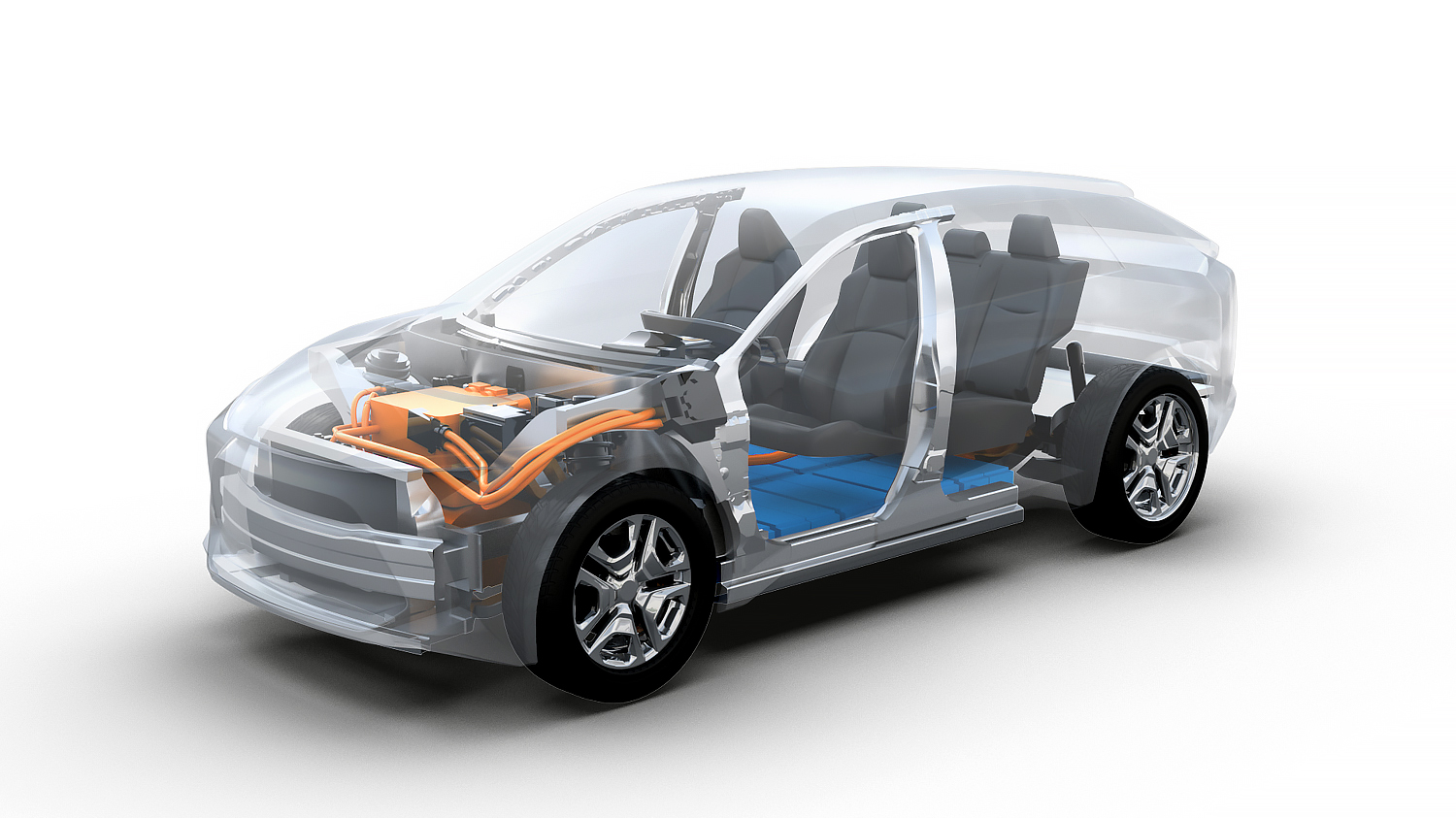

Towering Toyota and small Subaru have joined their engineering and production forces to develop a common platform dedicated to battery-electric vehicles, the companies said today in an emailed statement. “The platform will be developed in a way that will make it broadly applicable to multiple vehicle types, including C-segment-class and D-segment-class sedans and SUVs, as well as to efficient development of derivative vehicle models,” the companies say.
For those not familiar with the ABCs of vehicle segmentations outside of the U.S., C-segment more or less refers to midsize cars, while D denotes “large” cars, both by EU, or Japanese, measures.
The joint project can be thought of as the Japanese answer to Volkswagen’s MBE. While Volkswagen’s electric MBE “kit” accommodates anything from very small to “large B-segment models with up to seven seats,” the Toyobaru platform aims a few notches higher.
The companies also announced “a C-segment-class BEV SUV model for sale under each company’s own brand.” Even included was a see-through picture of the battery-powered SUV, something they usually would be loath to do unless a launch is fairly imminent. This time, it’s different. “We are just getting started,” tells me Toyota’s Tokyo-based spokesman Aaron Spencer Fowles, “we considering introducing the BEV SUV in the first half of the 2020s. Concrete development schedules will need to be discussed.”
The common BEV platform however, is more advanced. Subaru started discussing electric vehicles with Toyota when Subaru got with the EV C.A. Spirit program in 2017, a joint-venture launched in 2015 between Toyota, Mazda, and Denso to together develop EV technology for everything from “mini cars to trucks,” and to undertake “joint development of a common architecture of electric vehicles.” A basic agreement to jointly attack productization was reached in August 2018, Fowles says.
“The commercialization of BEVs requires the use of large-capacity batteries, and, along with the popularization of BEVs, demands of a new dimension will be placed on battery supply,” says the joint statement, a more than subtle hint that Subaru is now part of Toyota’s (and by extension Mazda’s) master plan to produce batteries at enormous scale together with Panasonic, which in January signed a 49:51 joint-venture with Toyota to jointly develop, produce, and market “ automotive prismatic lithium-ion batteries, solid-state batteries, and next-generation batteries.”
Toyota and Subaru are looking back at quite some common history. Subaru, the automotive arm of Fuji Heavy Industry, once was owned by GM, which had bought the company in 1999 when foreign automakers swooped into Japan to snap up Japanese car companies distressed by the bursting Japanese asset price bubble. Six years later, GM unloaded Subaru to raise badly needed cash. Toyota jumped into the breach, buying a large chunk of formerly GM-held Subaru shares. With some 17% of Subaru, Toyota is in fact the company’s largest single shareholder, the remainder is mostly held by banks and insurance companies in single-digit tranches.
Toyota scheduled a press briefing for tomorrow, Friday, June 7th in Tokyo. The meeting, originally billed as an intimate “special lecture on Toyota’s efforts in electrification,” possibly will sched additional light on the matter. Seats suddenly are in extremely short supply.